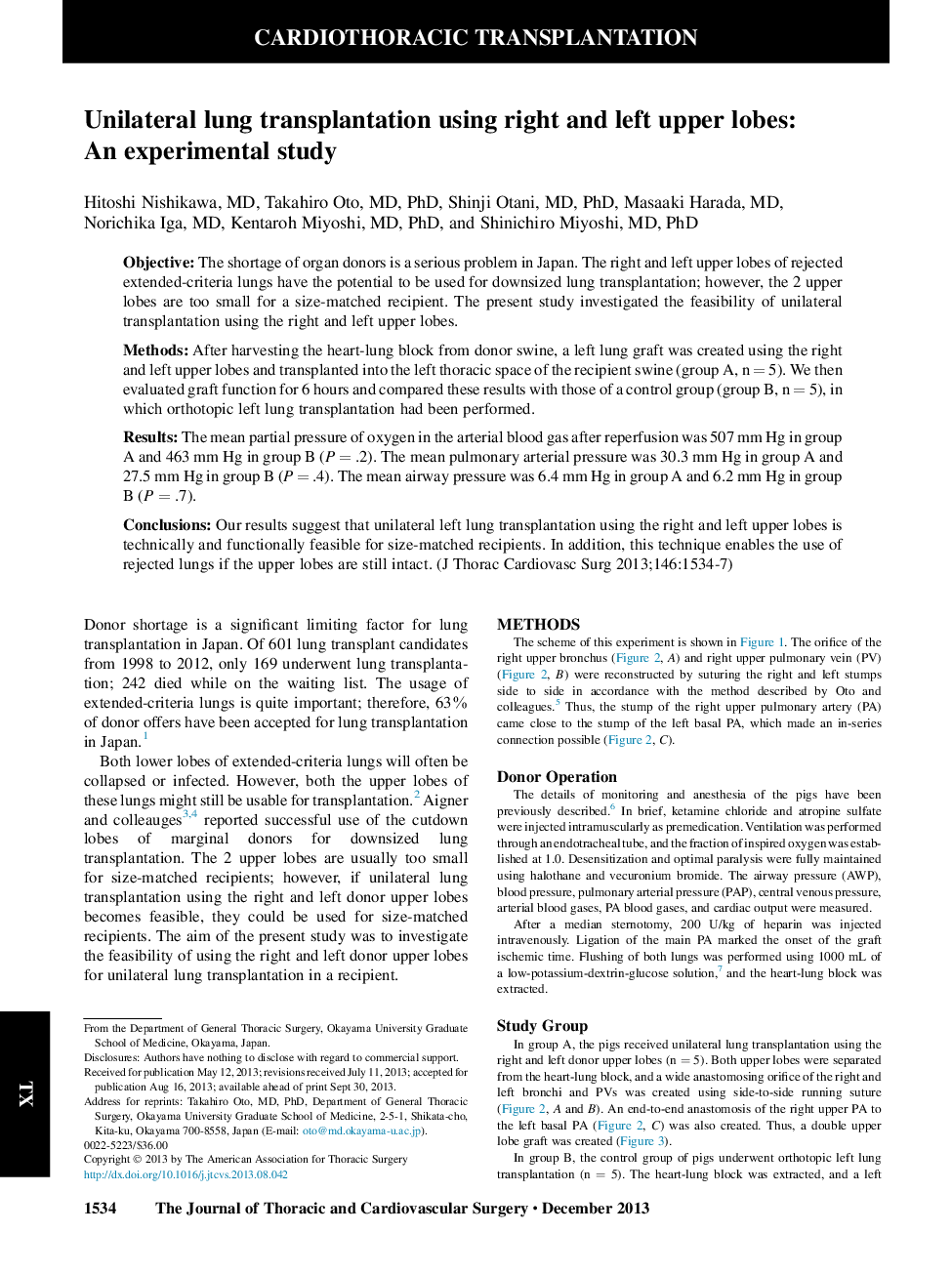| Article ID | Journal | Published Year | Pages | File Type |
|---|---|---|---|---|
| 2980865 | The Journal of Thoracic and Cardiovascular Surgery | 2013 | 4 Pages |
ObjectiveThe shortage of organ donors is a serious problem in Japan. The right and left upper lobes of rejected extended-criteria lungs have the potential to be used for downsized lung transplantation; however, the 2 upper lobes are too small for a size-matched recipient. The present study investigated the feasibility of unilateral transplantation using the right and left upper lobes.MethodsAfter harvesting the heart-lung block from donor swine, a left lung graft was created using the right and left upper lobes and transplanted into the left thoracic space of the recipient swine (group A, n = 5). We then evaluated graft function for 6 hours and compared these results with those of a control group (group B, n = 5), in which orthotopic left lung transplantation had been performed.ResultsThe mean partial pressure of oxygen in the arterial blood gas after reperfusion was 507 mm Hg in group A and 463 mm Hg in group B (P = .2). The mean pulmonary arterial pressure was 30.3 mm Hg in group A and 27.5 mm Hg in group B (P = .4). The mean airway pressure was 6.4 mm Hg in group A and 6.2 mm Hg in group B (P = .7).ConclusionsOur results suggest that unilateral left lung transplantation using the right and left upper lobes is technically and functionally feasible for size-matched recipients. In addition, this technique enables the use of rejected lungs if the upper lobes are still intact.
